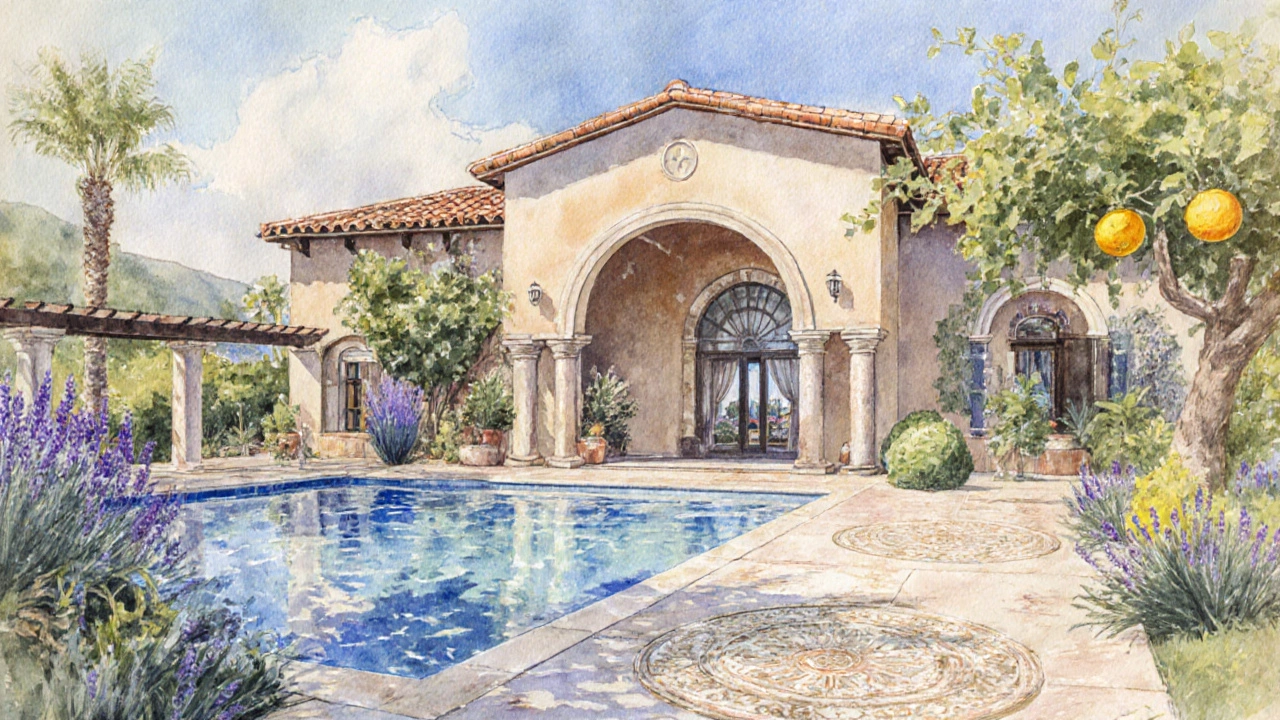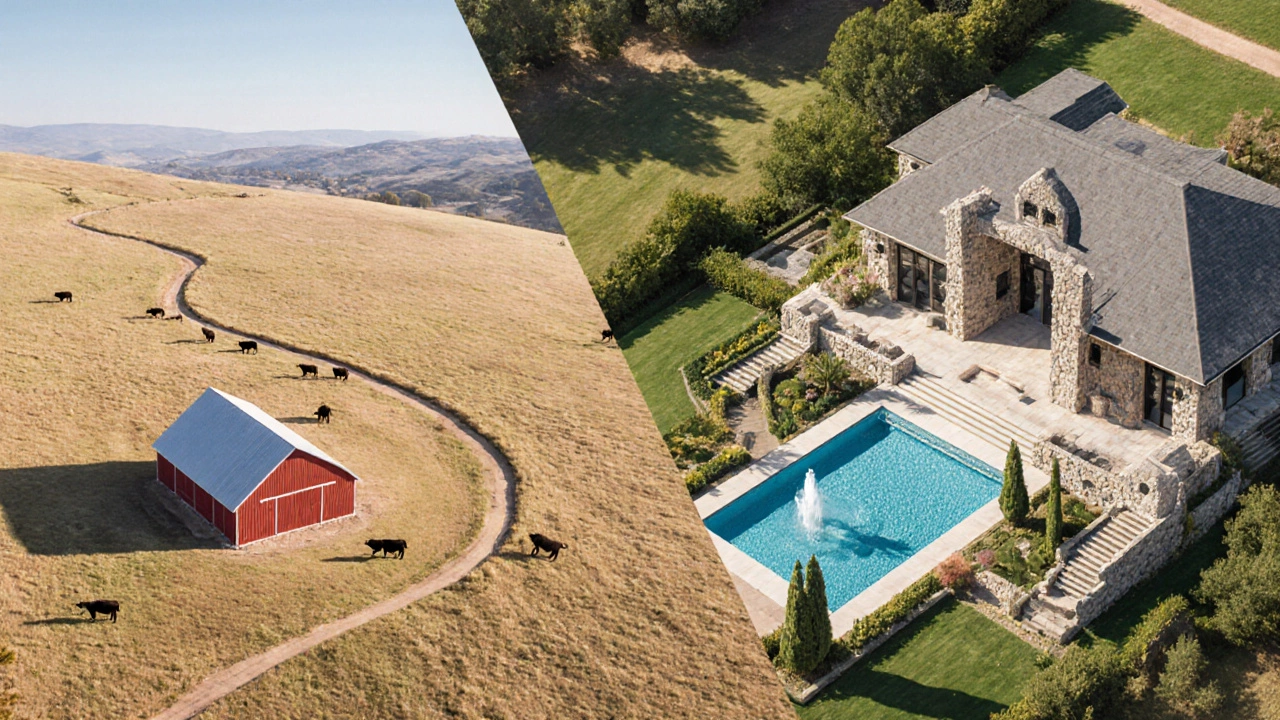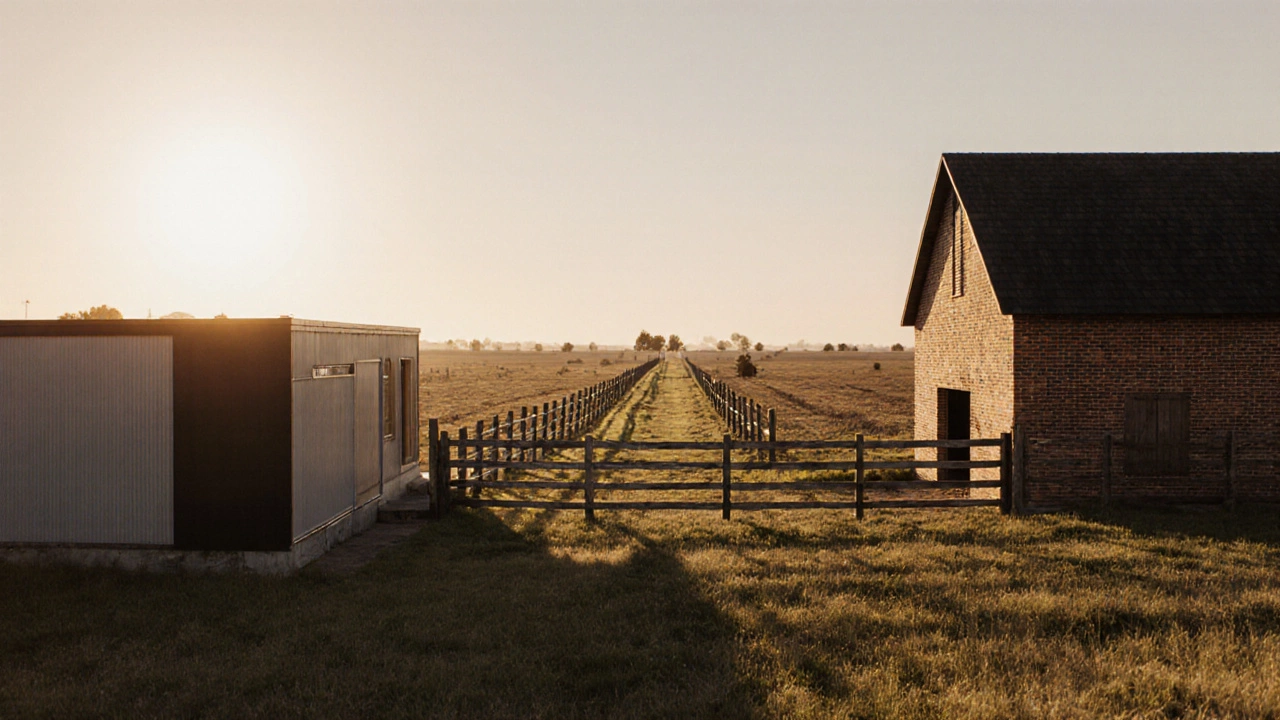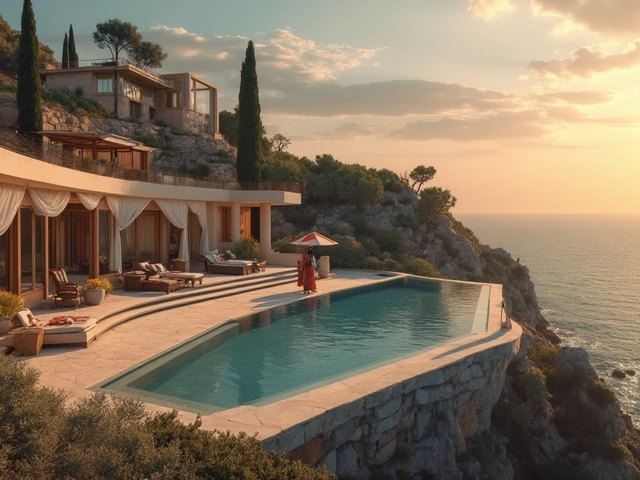Ranch vs Villa Decision Calculator
Find Your Perfect Property Type
Answer these 5 questions to discover whether a ranch or villa aligns with your lifestyle and priorities. This tool uses the key differences explained in our guide to give you personalized recommendations.
1. How important is outdoor space and land management?
2. What amenities matter most to you?
3. How much land are you willing to maintain?
4. What is your primary motivation for buying?
5. What location suits you best?
Your Recommendation
Based on your answers, we've calculated your preference score between ranch and villa characteristics.
Why this matches your priorities:
- Land Size Preference
- Key Amenities
- Maintenance Comfort
- Lifestyle Motivation
- Location Preferences
How This Compares to Our Guide
When you hear the words “ranch” and “villa,” you might picture a sprawling countryside homestead or a luxurious Mediterranean escape. Both appeal to different lifestyles, but the difference between a ranch and a villa goes far beyond aesthetics. This guide breaks down what each property type offers, where they thrive, and how they affect your budget and day‑to‑day life.
Quick Takeaways
- Ranches prioritize land, privacy, and a casual, often rustic, lifestyle.
- Villas focus on upscale design, curated amenities, and often a more social, resort‑like ambience.
- Typical land size for a ranch is 5‑100+ acres; villas usually sit on 0.2‑2 acres.
- Ranch prices are driven by acreage and agricultural potential; villa prices hinge on design, location, and luxury finishes.
- Maintenance on a ranch involves land care; villa upkeep leans toward interior finishes and shared community services.
What Is a Ranch?
Ranch is a large, single‑family property typically set on extensive land, often used for farming, livestock, or simply enjoying open‑space living. Historically rooted in the American West, modern ranches can be found worldwide, ranging from working farms to leisure estates.
Key characteristics include:
- Open, rectangular floor plans with low‑profile roofs.
- Direct access to the outdoors-often with private trails, barns, or paddocks.
- Minimal interior ornamentation; focus is on functionality.
What Is a Villa?
Villa is a high‑end residential building that blends luxury architecture with landscaped gardens, typically inspired by Mediterranean or European designs. Villas are popular in resort regions, upscale suburbs, and heritage districts.
Typical villa traits include:
- Elegant façades-stucco, stone, or tiled roofs.
- Private pools, courtyards, and manicured gardens.
- Attention to interior detail-high‑end finishes, vaulted ceilings, and designer lighting.

Architectural & Design Differences
While both property types can be customized, their core design philosophies diverge.
Architecture Style varies significantly: ranch homes favor a single‑story, horizontal spread that blurs indoor‑outdoor boundaries, whereas villas embrace verticality, ornamental columns, and often multiple stories to maximize views.
These choices affect:
- Construction costs-villa roofs and stone façades usually cost more per square foot.
- Energy efficiency-ranches benefit from natural ventilation; villas often rely on HVAC for climate control.
Land Size & Layout
Land Size is a defining factor. Ranches typically range from 5 to over 100 acres, allowing for pastures, orchards, or hobby farms. In contrast, villas sit on parcels between 0.2 and 2 acres, emphasizing landscaped gardens rather than expansive open fields.
Because of this, zoning can differ sharply. Zoning Regulations for ranches often permit agricultural uses, while villa zones focus on residential density and setbacks.
Amenities & Lifestyle
Both property types offer distinct lifestyle perks.
- Ranch: Private trails, barns, stables, and opportunities for hobby farming or equestrian activities.
- Villa: Infinity pools, outdoor kitchens, spa‑like bathrooms, and proximity to upscale dining or golf courses.
The choice boils down to whether you value land‑based recreation or curated luxury experiences.

Price & Maintenance
Price Range differs dramatically. A modest ranch on 10 acres in rural Texas might start around $300,000, while a premium villa in a coastal resort could easily exceed $2million.
Maintenance costs also split:
- Maintenance Cost on a ranch includes land management, fence repair, and possible livestock feed.
- Maintenance Cost for a villa leans toward pool servicing, landscaping, and high‑end interior upkeep.
Understanding these ongoing expenses helps avoid unpleasant surprises after purchase.
Comparison Table
| Attribute | Ranch | Villa |
|---|---|---|
| Typical Land Size | 5-100+ acres | 0.2-2 acres |
| Architectural Style | Horizontal, single‑story, rustic | Elegant, multi‑story, Mediterranean |
| Common Amenities | Barn, stables, trails | Pool, garden, spa‑like interiors |
| Typical Locations | Rural, semi‑rural, outskirts of cities | Coastal, upscale suburbs, heritage districts |
| Average Price Range (USD) | $300K - $1.5M | $800K - $5M+ |
| Maintenance Focus | Land care, fences, livestock | Pool, landscaping, interior finishes |
Which One Is Right for You?
If you crave privacy, love outdoor work, and enjoy managing a large parcel of land, a ranch aligns with your goals. Think holiday homes that double as hobby farms or retreats where you can ride horses at sunrise.
Conversely, if you prefer a polished living environment, want resort‑style amenities at your doorstep, and value a strong resale market in premium neighborhoods, a villa likely fits better.
Consider these decision points:
- What lifestyle activities matter most? (farming vs. leisure)
- How much land are you prepared to maintain?
- Which location supports your work, family, or social needs?
- Are you comfortable with the long‑term financial commitments of each?
Visiting both types of properties-ideally with a trusted real‑estate agent-helps you feel the texture of each lifestyle before committing.
Frequently Asked Questions
Can a ranch be used as a primary residence?
Absolutely. Many owners live year‑round on ranches, especially in regions where utilities and internet service are reliable. It offers a blend of privacy and space that city living can’t match.
Do villas require homeowner association (HOA) fees?
In many gated communities, villas are part of an HOA that covers common‑area maintenance, security, and sometimes pool upkeep. Fees can range from a few hundred to several thousand dollars annually.
Which property type typically appreciates faster?
Appreciation depends on location more than style. However, villas in high‑demand, low‑supply areas (like beachfront or luxury suburbs) often see steeper price growth than ranches in remote regions.
Is financing a ranch more difficult than a villa?
Because ranches usually include a larger land component, lenders may require a higher down payment or evaluate the property’s agricultural potential. Villas, being more conventional residences, fit standard mortgage criteria.
What environmental considerations should I keep in mind?
Ranches often involve water rights, wildlife habitats, and soil conservation. Villas may have stricter building codes regarding setbacks, coastal erosion, or historic preservation. Consulting local planning departments is essential.






